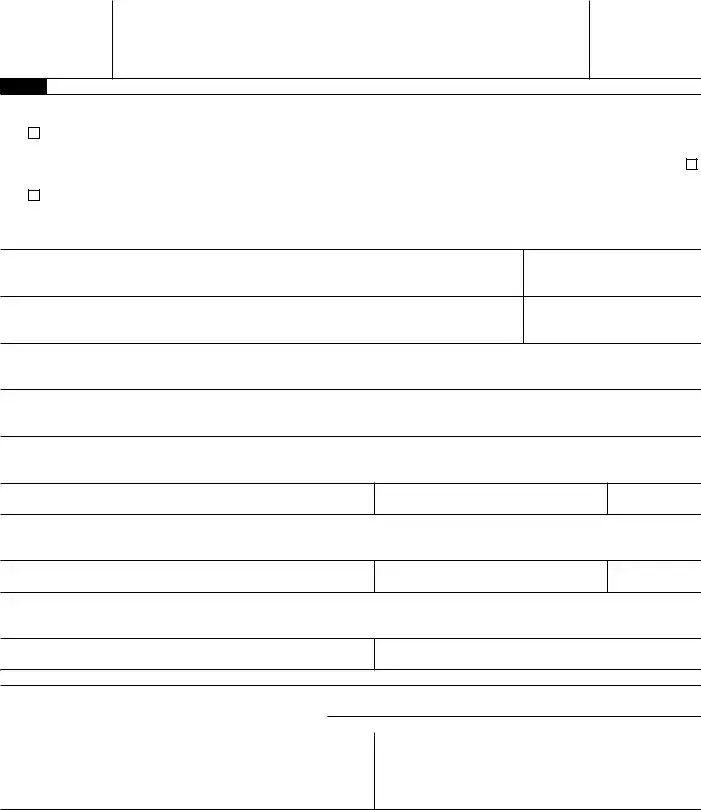The IRS 8822 form, essential for notifying the Internal Revenue Service (IRS) of a change in address, shares characteristics with several other documents. Among them, the IRS Form 8822-B stands out for its specific function of updating information for businesses or entities that have experienced a change in address or responsible party. Much like its counterpart, this form ensures that important tax documents and notifications reach the right location, maintaining the flow of communication between the IRS and the entity in question.
Similarly, IRS Form 1040, the U.S. individual income tax return, aligns with the 8822 form in its necessity for accurate personal information. While primarily used for reporting annual income and calculating taxes owed or refunded, the 1040 form requires current address details to ensure taxpayers receive all correspondence. This highlights the importance of up-to-date information across different tax-related forms to keep taxpayers in compliance and informed.
The Change of Address form provided by the United States Postal Service (USPS) mirrors the intent behind the IRS 8822 form. When individuals move, completing this form ensures that their mail is forwarded to the new address. This process prevents important documents, like tax returns or refund checks, from getting lost, underscoring the importance of notifying relevant organizations about address changes.
The Social Security Administration (SSA) Change of Address form parallels the IRS 8822 in its purpose. For beneficiaries of Social Security or Medicare, updating their address through this form is crucial to receiving essential notices and checks. This form, like the 8822, safeguards the continuity of benefits and information flow between the government and citizens.
Form W-9, Request for Taxpayer Identification Number and Certification, shares a connection with the 8822 form through its role in the accurate reporting and withholding of taxes. Independent contractors and entities use this document to provide their Taxpayer Identification Number (TIN) or Social Security Number (SSN) to entities that will pay them. Address accuracy on this form is vital for receiving tax documents such as the Form 1099, which reports income earned outside of traditional employment.
The voter registration update form, used across many states in the U.S., echoes the importance of current address information as seen with the IRS 8822 form. Updating one’s address ensures that individuals remain on the electoral roll for their correct precinct, thereby maintaining their eligibility to vote in local, state, and federal elections. It’s a civic parallel to the financial reporting accuracy promoted by the 8822 form.
Form 4868, Application for Automatic Extension of Time To File U.S. Individual Income Tax Return, shares a procedural similarity with the IRS 8822 in that it provides taxpayers additional time to file their tax return. However, just as with the change of address form, ensuring that the IRS has the correct address is crucial to receive the confirmation of the extension and any other correspondence.
The Department of Motor Vehicles (DMV) change of address form in many states offers a practical counterpart to the IRS 8822 form. Drivers need to update their address to receive renewal notices for their driver's license and vehicle registration on time. This form, akin to the 8822, prevents misrouted important notifications and legal documents, maintaining legal driving status.
Form I-9, Employment Eligibility Verification, utilized by employers within the United States, requires up-to-date personal information, including the employee's address. While its primary purpose is to verify the legal authorization to work in the U.S., accuracy in personal information is crucial for compliance and verification purposes, mirroring the IRS 8822's emphasis on current address details.
Lastly, the Health Insurance Marketplace application form, used by individuals seeking health insurance through the Affordable Care Act (ACA) exchanges, demands accurate personal and address information for applicants. Similar to the IRS 8822 form, this ensures that all correspondence, including vital insurance coverage information and notices, reaches the applicant. This is critical for maintaining coverage and fulfilling health care law requirements.


